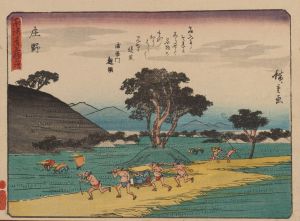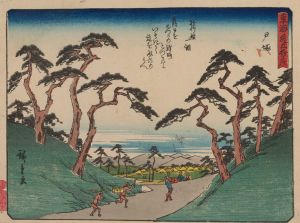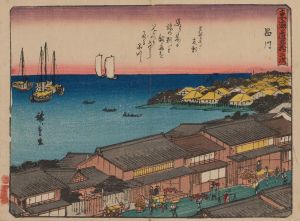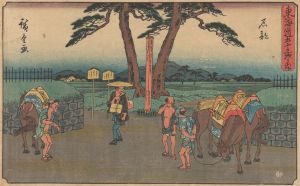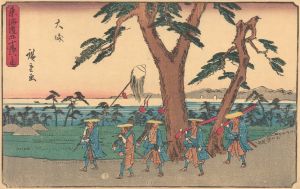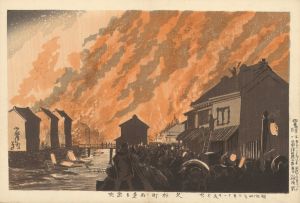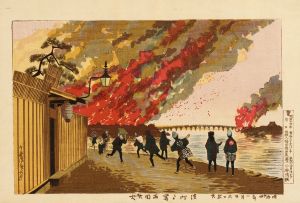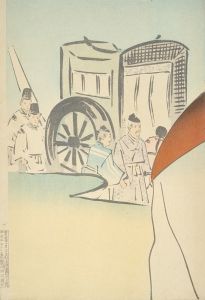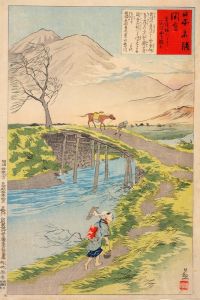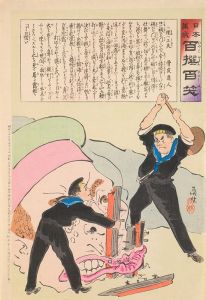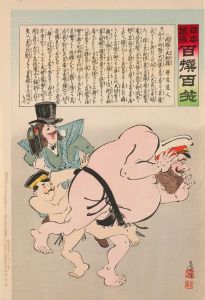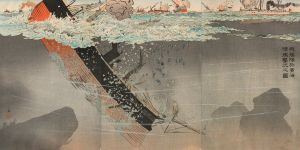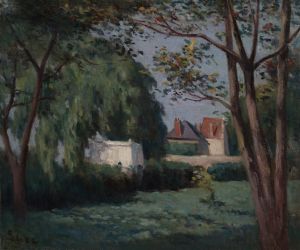
View of Houses of Entertainment in Imado at Dawn
A hand-painted replica of Kobayashi Kiyochika’s masterpiece View of Houses of Entertainment in Imado at Dawn, meticulously crafted by professional artists to capture the true essence of the original. Each piece is created with museum-quality canvas and rare mineral pigments, carefully painted by experienced artists with delicate brushstrokes and rich, layered colors to perfectly recreate the texture of the original artwork. Unlike machine-printed reproductions, this hand-painted version brings the painting to life, infused with the artist’s emotions and skill in every stroke. Whether for personal collection or home decoration, it instantly elevates the artistic atmosphere of any space.
"View of Houses of Entertainment in Imado at Dawn" is a woodblock print by the renowned Japanese artist Kobayashi Kiyochika, who is celebrated for his innovative approach to the traditional ukiyo-e art form. Kiyochika was active during the Meiji period, a time of significant transformation in Japan as the country rapidly modernized and opened up to Western influences. This period saw a blending of traditional Japanese aesthetics with new techniques and perspectives, which is reflected in Kiyochika's work.
Kiyochika was born in 1847 in Edo, now known as Tokyo, and he lived through the tumultuous changes of the Meiji Restoration. His work is often noted for its atmospheric qualities and the way it captures the interplay of light and shadow, a technique that was relatively novel in Japanese prints at the time. He was influenced by Western art, particularly photography and Western-style painting, which is evident in his use of perspective and shading.
The print "View of Houses of Entertainment in Imado at Dawn" is part of Kiyochika's broader series of works that depict various scenes around Tokyo. Imado, a district in Tokyo, was known during the Meiji era for its entertainment venues, which included teahouses and theaters. These establishments were popular social spots where people gathered for leisure and cultural activities. Kiyochika's depiction of Imado at dawn captures a moment of quiet transition, as the nightlife winds down and the day begins.
In this work, Kiyochika employs a muted color palette and delicate gradations of tone to convey the soft light of early morning. The composition likely features traditional Japanese architecture, with wooden structures that are characteristic of the period. The use of light and shadow in the print suggests a sense of depth and atmosphere, drawing the viewer into the tranquil scene. This technique highlights Kiyochika's skill in rendering the subtleties of natural light, a hallmark of his artistic style.
Kiyochika's prints are often compared to Western etchings and lithographs due to their emphasis on mood and lighting. His ability to blend Western and Japanese elements made his work distinctive and influential. While ukiyo-e traditionally focused on vibrant colors and bold outlines, Kiyochika's approach was more subdued and nuanced, reflecting the changing tastes and cultural dynamics of the Meiji period.
"View of Houses of Entertainment in Imado at Dawn" exemplifies Kiyochika's contribution to the evolution of Japanese printmaking. His work not only documents the physical landscape of Tokyo during a time of change but also captures the intangible atmosphere of the era. Kiyochika's prints remain significant for their artistic innovation and their role in bridging traditional Japanese art with modern influences.
Kiyochika continued to produce art until his death in 1915, leaving behind a legacy that has been celebrated for its unique perspective and technical mastery. His prints are held in high regard by collectors and are featured in museums around the world, serving as a testament to his impact on the art of ukiyo-e and the broader field of Japanese art.





